Everything You Wanted To Know About Siberian Husky
Basic Information:
Life expectancy: 12 - 15 years
Origin: Siberia
Colours: White, Black, Black & Tan, Black & White, Sable & White, Grey, Gray & White, Silver-gray, Red & White
Temperament: Friendly, Intelligent, Outgoing, Alert, Gentle
Height: Female: 50-56 cm, Male: 54-60 cm
Weight: Female: 16-23 kg, Male: 20-27 kg
Dog Food Chart with MRP as on 19/10/2021 for Husky (Maxi Breed) available in India:
.jpg)
Overview:
Not every breed made its American debut with as big a splash as the Siberian Husky. A team of these lean, fast sledge dogs, originally developed by the seminomadic Chukchi people of Northeastern Asia to pull sledges over long distances, proved just what they were made of while racing across the frozen Alaskan wilderness to deliver lifesaving diphtheria serum to remote Nome, Alaska, in January 1925. Some of the dogs were taken on a tour of the Lower 48 after news of the courageous men and dogs spread, and they were met with wild acclaim. From that day on, the Siberian has been popular.
For those looking for a calm dog to settle with on the couch in the evenings and maybe enjoy a short stroll around the block a few times a week, the Siberian Husky is not a match. The same goes for those looking for a devoted companion who loves to please and hangs on his owner every word.
But for people who want a dog to be a partner and friend, who will love children, greet guests, and get along with other dogs and most importantly, for those ready and willing to provide consistent leadership and plenty of vigorous exercises every day then a Siberian Husky will be a joy.
Although they usually get along well with other dogs, Siberians have a strong predatory streak and may consider small animals, including cats, prey. Those with multispecies households need to be extremely cautious with this breed.
As should be expected from a breed developed for snow country, the Siberian sheds year-round, but more so in spring and fall. On the upside, his short, thick coat requires little care, and frequent brushing will curb the shedding.
Siberians are not usually barkers, although they will often howl, especially to a siren. They are adept escape artists and have been known to climb over and dig under some pretty serious fences. Neutering may lessen the sense of wanderlust, but do not count on it: Siberians should be microchipped and have an ID tag on their collars at all times if you want to help ensure their safe return after an escape.
Personality:
The Siberian Husky is not a one-person dog. Nor is he a guard dog. He might let you know someone is around, but he has no concept of protecting you. The Siberian is a friendly and gentle dog who is not overly suspicious of strangers or aggressive toward other dogs. Among the qualities that make him a wonderful companion are his intelligence, eagerness, and sense of humour. This is a dog that will never let you take life too seriously.
If you plan to live with a Siberian, it is a good idea to reorder the way you think about events. For instance, though you may think your Siberian is indulging in destructive behaviour, he is simply acting on centuries of instinct. He does not dig to be annoying, he digs for shelter and a place to hide and bury things. Or he might be going after a critter. In the tundra, that's how you find a meal. If you are determined to have both a Siberian and nice landscaping, be sure to train him right from the start that he has one place in the yard to dig; otherwise, you could look outside one day and see a lunar landscape
The Siberian does not need a lot of space to live in, but he does need adequate exercise. He will enjoy having a place where he can run safely, and (health permitting) he is a great companion for anyone who likes to take long walks, runs, or hikes. You can also harness his natural abilities and teach him to pull a sledge, wagon, or cart. In a Siberian ideal world, you will learn to snowshoe and skijor and let him shoot through the snow while pulling a sledge. However, it is always a good idea to check with your vet before starting any new exercise program with your dog.
He is not a big barker. Instead, the Siberian makes his music. He will whine or moan, and when he feels like it, he will hold his head high and release his Siberian howl. There is no other sound like it.
Health:
All dogs have the potential to develop genetic health problems, just as all people have the potential to inherit a particular disease. Run, do not walk, from any breeder who does not offer a health guarantee on her puppies, who tells you that the breed is 100 per cent healthy and has no known problems, or who tells you that her puppies are isolated from the main part of the household for health reasons. A reputable breeder will be honest and open about health problems in the breed and the incidence with which they occur in her lines.
The Siberian is generally healthy as a breed, but there are some concerns to be aware of. Possible inherited diseases include hip dysplasia, an orthopaedic condition in which the head of the thigh bone does not fit properly into the hip socket. Mild cases result in arthritis that may be manageable with medications and other therapies. More severe cases require surgery. Hip dysplasia is a terrible situation for a dog who loves to run and pull sledges.
Siberians can also be affected by eye problems including juvenile cataracts, corneal dystrophy, and progressive retinal atrophy. Juvenile cataracts typically start forming before the dog is 2 years old. Cataracts are an opacity that forms in the lens and either clouds or blocks vision. Surgery can correct the problem. However, if the cataract is not causing pain or other medical issues, understand that most dogs, including Siberians, get around just fine when they are blind. Corneal dystrophy involves a different type of opacity, this time one that clouds the cornea, as opposed to cataracts that cloud the lens. Typically both eyes are affected. A Siberian can become blind depending on how much of the cornea is clouded. Progressive retinal atrophy (PRA) is an inherited disease of the retina that eventually leads to blindness.
Not all of these conditions are detectable in a growing puppy, and it can be hard to predict whether an animal will be free of these maladies, which is why you must find a reputable breeder who is committed to breeding the healthiest animals possible. They should be able to produce independent certification that the parents of the dog (and grandparents, etc.) have been screened for these defects and deemed healthy for breeding. That is where health registries come in.
Grooming:
The Siberian should look well furred according to the breed standard, and indeed he does. He has a medium-length double coat. The soft, dense undercoat is topped with straight guard hairs that lie smooth. That double coat means that the Siberian sheds. Oh, yes, he sheds. He sheds throughout the year; once or twice a year he undergoes a process called blowing coat, which is just what it sounds like. During this period you may feel that it is snowing grey and white hair. A shedding blade or coat rake will become your best ally.
That said, the Siberian is pretty easy to groom. Outside of shedding season, brush him occasionally with a slicker brush to remove dead hair. Trim the hair between the footpads. That all. A bath is rarely necessary. The Siberian is a very clean dog with little to no odour.
The rest is basic care. Trim his nails as needed, usually every week or two if he does not wear them down naturally with all his running around. Brush his teeth regularly with a vet-approved pet toothpaste for good overall health and fresh breath.
Published By: Admin
Published On: 5-October-2021

 0
0 



.jpg)




